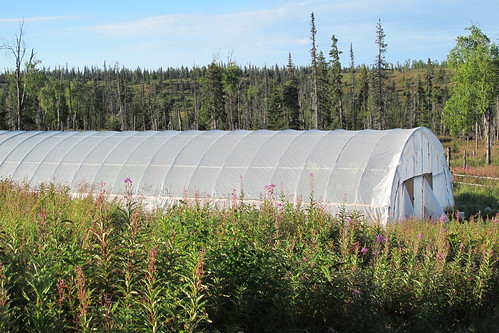
I remember when I first moved to Alaska, the only vegetable I ate was potatoes. Fruits and veggies were expensive and weren’t even fresh! Up here, produce is shipped or flown up from the lower 48, and by the time it gets to off-road communities it can be nearly rotten. Plus, the nutritional value of produce declines each day after picking. But now, the last frontier is seeing a paradigm shift in favor of flavor: high tunnels.High tunnels are similar to greenhouses but are polyethylene covered structures where plants grow in the ground, instead of on raised benches, and the air inside heats passively from the sun, instead of from a heater. USDA’s Natural Resources Conservation Service is helping Alaskans invest in high tunnels through its Environmental Quality Incentives Program. Landowners enrolled in this program must grow crops, food or fiber in the high tunnel for four years. NRCS pays the landowner a flat rate per square foot of the high tunnel.
High tunnels allow people to grow affordable, local, fresh and nutritious food. High tunnels extend the growing season in Alaska from the typical 105 days up to 145 days by increasing soil and air temperatures and protecting plants from frost.

By the end of the summer, NRCS Alaska will have helped build more than 400 high tunnels. More than 100 of these are in off-road locations like Kodiak, Bethel, Sitka and Nome.
The off-road high tunnels are especially noteworthy. Movinga high tunnel frame to a place without road access means flying, barging or snow-machining it in, like the Eagle Song Peony Family Farm did.
After a high tunnel is erected, the fun begins. Typical Alaskan crops are cool-season, fast-growing plants like broccoli, kale, rhubarb and peas. With high tunnels, Alaskan farmers are now able to grow warm season plants like melons, cucumbers and tomatoes—tremendously expanding variety.

I am one Alaskan who is thankful to see the high tunnels sprouting up. The selection and assortment of produce available in my area, thanks to high tunnels, is definitely appreciated—after all, a person can’t live on potatoes forever.
Learn more about NRCS’s Environmental Quality Incentives Program.
Follow NRCS on Twitter.
Check out other conservation-related stories on the USDA blog.
